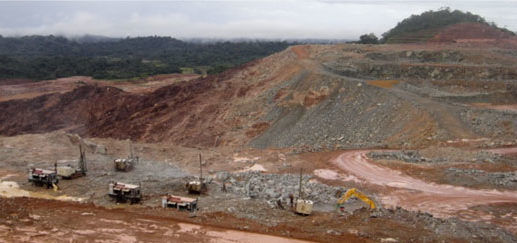The latest quarterly report from Minsur indicates that the company quickly recovered from the impact of the coronavirus, which closed its operations in the second quarter.
The report for the third quarter of 2020 indicates that tin production at San Rafael, the company’s Peruvian mine, was in line with Q3 2019. Overall tin-in-concentrate production was boosted by an additional 1,181 tonnes from the B2 tailings project. B2 came online in Q4 2019.
However, refined tin production at Pisco, Minsur’s smelter in Peru, did not see an increase over last year. Despite additional feed from B2, a high volume of concentrate stocks were processed in 2019, meaning that no annual increase was seen.
Production at both the mine and smelter year-to-date remains lower than in 2019 due to the closures as a result of the coronavirus pandemic. Minsur felt the full impact of COVID-19 during the second quarter, with tin production down over 35%. Although there has been some recovery in Q3, San Rafael’s output remains some 21% lower YTD. Refined tin production has seen a better recover, and is now down just 6% YTD. The additional feed provided by B2 over the course of the year has played a pivotal role in this recovery.
Costs per treated tonne at Minsur’s Peruvian operations during 2020 have been much higher than in the previous year. The company attributes this to the lower volume of ore treated at the ore sorting plant, combined with additional costs due to COVID-19 safety measures. However, per tonne of tin, year-to-date costs are some 6% lower.
At the company’s subsidiary in Brazil, Taboca, a lower head grade at the Pitinga mine resulted in overall lower tin production, despite an increase in treated volumes. Taboca’s smelter at Pirapora produced 1,871 tonnes of refined tin during the quarter, some 17% higher than in 2019. The smelter received higher volumes of higher grade concentrate during the quarter.
Costs at Pitinga have continued to fall, with costs per treated tonne some 26% in Q3 2020 than in 2019. The devaluation of the Brazilian real, combined with higher treated volumes, helped to reduce costs. When by-product created are included, the cash cost at Pitinga was US$ 6,152/tonne in the third quarter, a 44% decreased compared to Q3 2019.
Our view: Minsur was able to capitalise on the production stability brought by the introduction of new health and safety measures during the third quarter. Production is now back in line with its usual output levels – or in the case of Taboca, exceeding normal volumes. This has not come without a price, however, with Q3 costs up noticeably at both the Peruvian and Brazilian operations. Despite this, previous work done to lower costs is now paying off, with year-to-date costs still below the 2019 benchmark. The company will be hoping that the upwards trend in the tin price continues to offset these costs in the fourth quarter.



